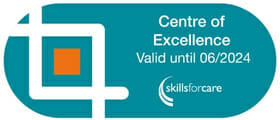You might be wondering what we mean by not limiting your learning to just attending training. What we mean is that simply attending mandatory training is just the start of the learning journey.
Training is ideally the facilitation of learning, but for staff to be competent, training is just the beginning.
We have discussed before about the focus on face-to-face training because a subject might contain practical elements. But gone are the days where face-to-face training is the only method to facilitate learning. The wonderful thing about learning is that it can happen every day and takes on many different forms.
How many times have you had supervision and discussed a slightly different approach when Bob gets upset? How many times have you completed a spot check and suggested an alternative way of doing things? Do you count these as learning sessions – we do! The real key here is capturing the evidence of that learning, ready to show CQC.
Staff will learn more and remember more if you ask them questions during your spot checks and supervision sessions (see last week’s research from Washington University), and they are unlikely to think of it as training as well, but I can guarantee that real world stuff will sink in. When it sinks in, it really is learning…
Training is not a fix-all solution when it comes to competence. Anyone can attend a training session, but not everyone will learn from it. There is no one-size-fits-all approach, as everyone learns and absorbs information in different ways. We have said it before, and we will say it again, competence is more important than attendance. Ensuring you and your team are competent and able to work safely is far more important than a mandatory tick-box exercise. (CQC Regulation 18)
A blended approach to learning, which we call “person centred learning”, means everyone can benefit from a variety of learning methods that support their development and ensures competence.
Over the last year, digital training has pioneered the way for individuals to learn and develop their skills without having to attend face-to-face sessions, so why stop now? By creating a shift in our mindset, we can unlock potential sources of evidence within existing processes. My supervision and spot check examples earlier are just the start.
A blended approach supports the best possible outcomes for learners. New staff can use eLearning to build solid foundations and then grow their knowledge and skills. Skills and knowledge are developed further through face-to-face training, supervision sessions, spot checks, research, tasks, shadow shifts, mentoring, buddy-ups. Learning can even take place during the five minutes when you make a cuppa, depending on what you talk about of course!
Person centred learning starts with assessing what you know, understand, and do, and then spending time focussed on where it is needed, instead of repeating everything just in case. Learners can build an evidence-based portfolio to demonstrate that whatever learning method they have used has translated into practice. After all, it is the practice bit that the people you support care about.
So, this is why we say, don’t limit your learning to just going on a training course…





